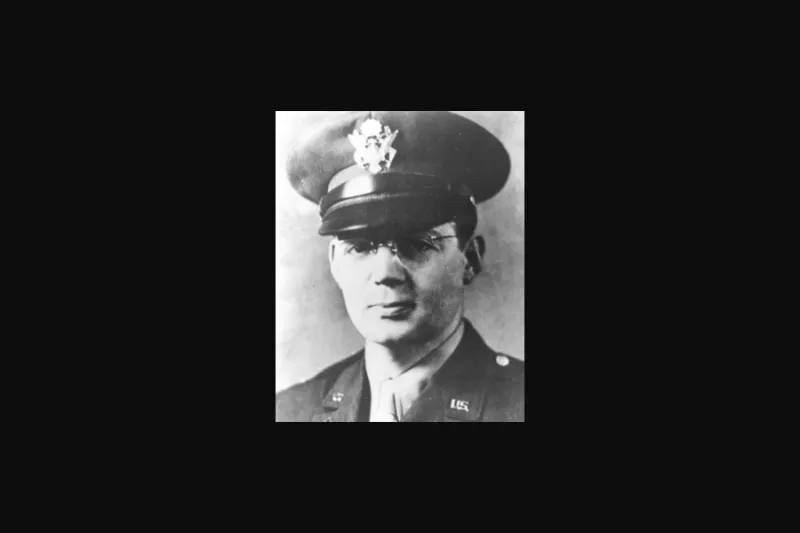
Washington, D.C. Newsroom, Feb 3, 2022 / 16:00 pm (CNA).
Four Chaplains Day, Feb. 3, recognizes the heroism of four World War II military chaplains who sacrificed their lives to save those trapped on a sinking U.S. Army transport ship.
“Their voices were the only thing that kept me going,” one survivor remembered of the fateful day in 1943.
The four men — Fr. John P. Washington, a Catholic priest, Rev. George L. Fox, a Methodist minister, Rabbi Alexander D. Goode, and Rev. Clark V. Poling, a Reformed Church in America minister — died after ministering to civilians and military personnel on the sinking SS Dorchester.
The four first met in 1942, at the Army Chaplains School at Harvard University. Each chaplain held the rank of first lieutenant, Columbia magazine reported.
The ship, packed with more than 900 people, departed New York for an Army base in Greenland on Jan. 23, 1943, Military Benefits reported. A few days later, on Feb. 3, a German submarine torpedoed the ship in the middle of the night. The lights went out as the cold Arctic waters surrounded the soldiers.
Amid of panic, the chaplains remained calm — and sprang into action. Fr. Washington, who had celebrated Mass just hours before, now gave absolution, according to the Army Historical Foundation. The four offered their life jackets to men who did not have them, and helped as many as they could escape into lifeboats. They themselves stayed behind.
Several eyewitnesses later spoke of the chaplains’ bravery, Military Benefits reported.
At one point, Petty Officer John J. Mahoney remembered turning back to his cabin to find his gloves. Rabbi Goode halted him, saying, “Never mind. I have two pairs,” and handed him some.
Mahoney later realized that the rabbi had just one pair.
Off the ship and in the water filled with debris, oil, and dead bodies, Pvt. William B. Bednar remembered hearing “men crying, pleading, praying.” But then he heard the chaplains, who were “preaching courage.” Those voices, he said, kept him alive.
Another survivor, named Grady Clark, recalled the scene.
“As I swam away from the ship, I looked back. The flares had lighted everything. The bow came up high and she slid under,” Clark said. “The last thing I saw, the four chaplains were up there praying for the safety of the men. They had done everything they could. I did not see them again. They themselves did not have a chance without their life jackets.”
Another eyewitness, John Ladd, said, “It was the finest thing I have seen or hope to see this side of heaven.”
The ship sank in fewer than 30 minutes.
With the frigid air and water temperatures, many of the men died from hypothermia before they could be rescued. Only 230 survived. Those who did remembered the chaplains linking arms and joining together in prayer and singing as the ship went down.
Today, they are remembered as “the four chaplains,” or “the immortal chaplains.”
In recognition of the chaplains’ heroism, Congress established Feb. 3 as “Four Chaplains Day” in 1988.
A year after their deaths, in 1944, Congress posthumously awarded each chaplain with a Purple Heart and the Distinguished Service Cross. In 1960, Congress also approved the Four Chaplains’ Medal, which was presented to the chaplains’ families the following year.
Throughout the country, the chaplains are remembered with monuments and memorials, including stained glass windows at the Pentagon, Military Benefits reported.
Their faces appeared on U.S. postage stamps in 1948, and, in 1951, President Harry S. Truman dedicated the Chapel of the Four Chaplains in the basement of Grace Baptist church in Philadelphia.
Today, the Four Chaplains Memorial Foundation, founded by the chaplains’ families and the ship’s survivors, continues their legacy, from supporting first responder chaplain programs to hosting student scholarship competitions.
If you value the news and views Catholic World Report provides, please consider donating to support our efforts. Your contribution will help us continue to make CWR available to all readers worldwide for free, without a subscription. Thank you for your generosity!
Click here for more information on donating to CWR. Click here to sign up for our newsletter.






Leave a Reply